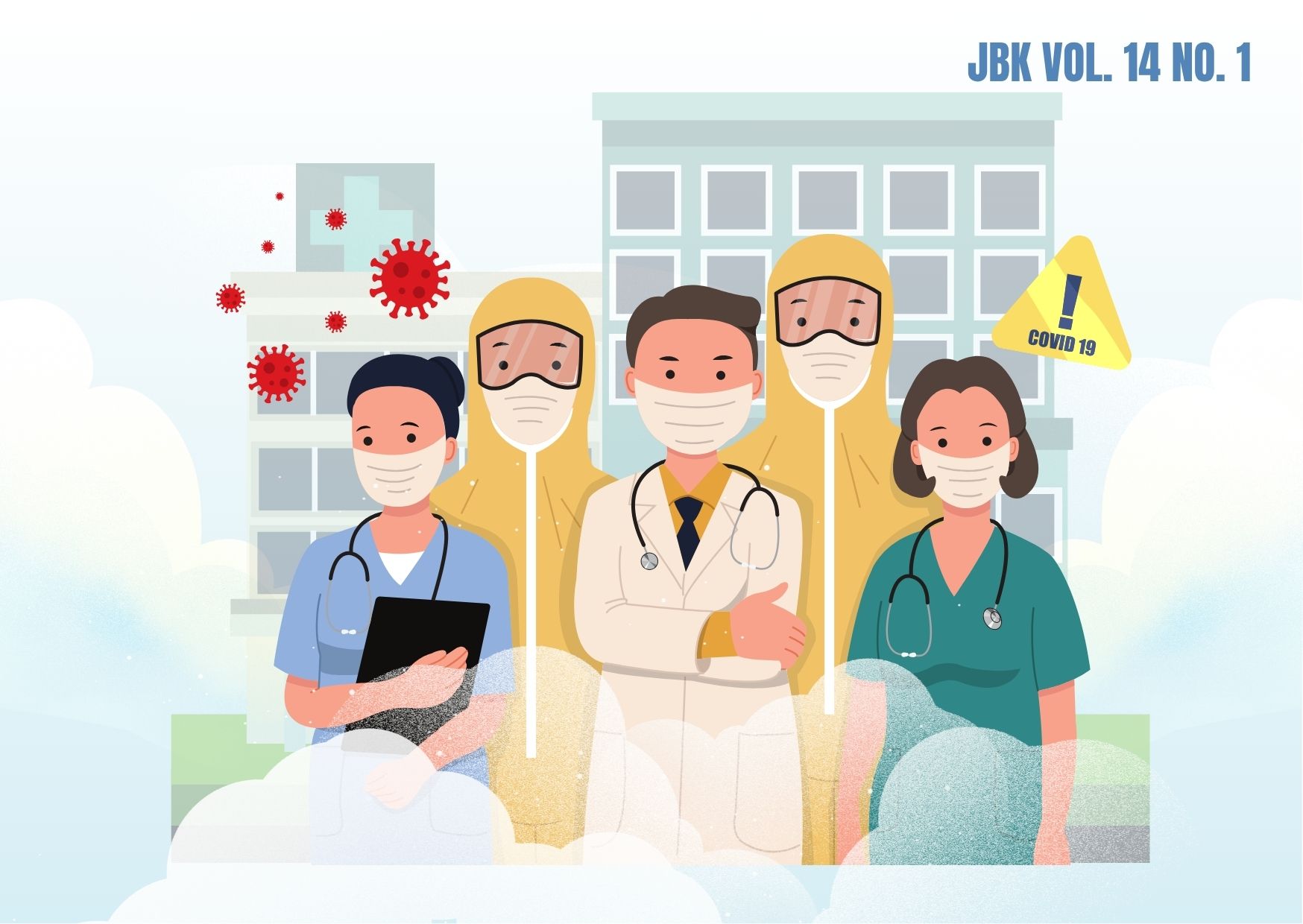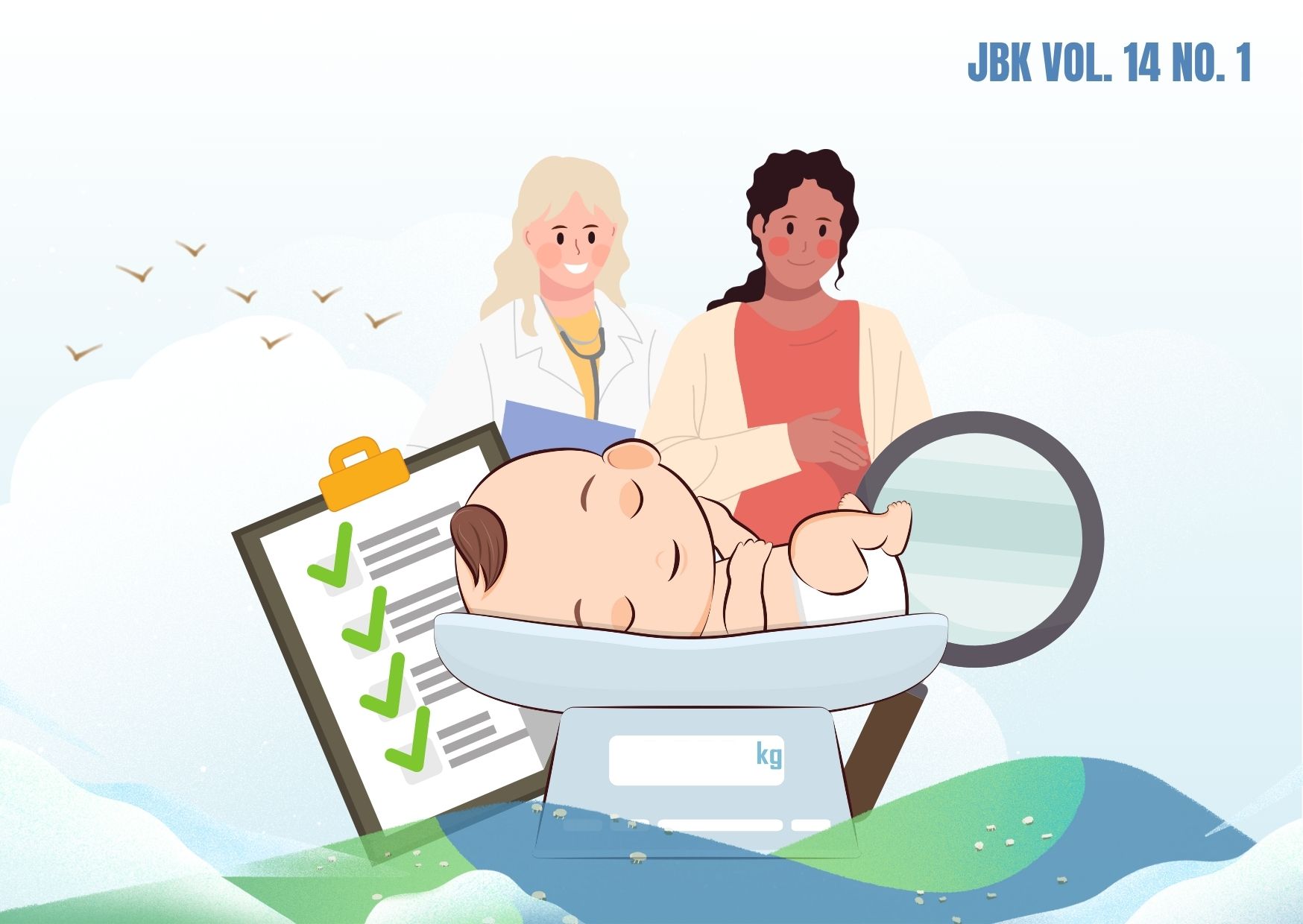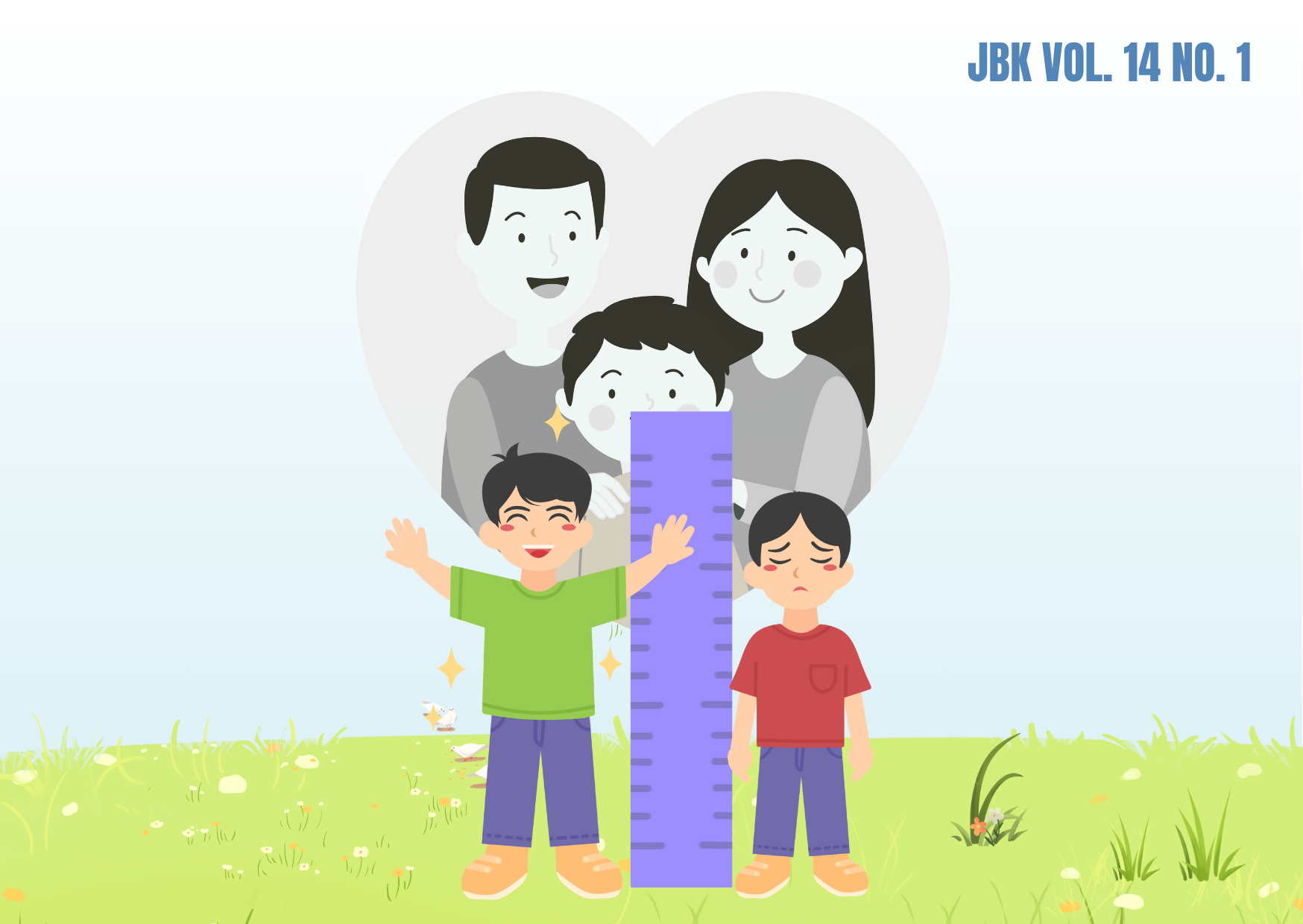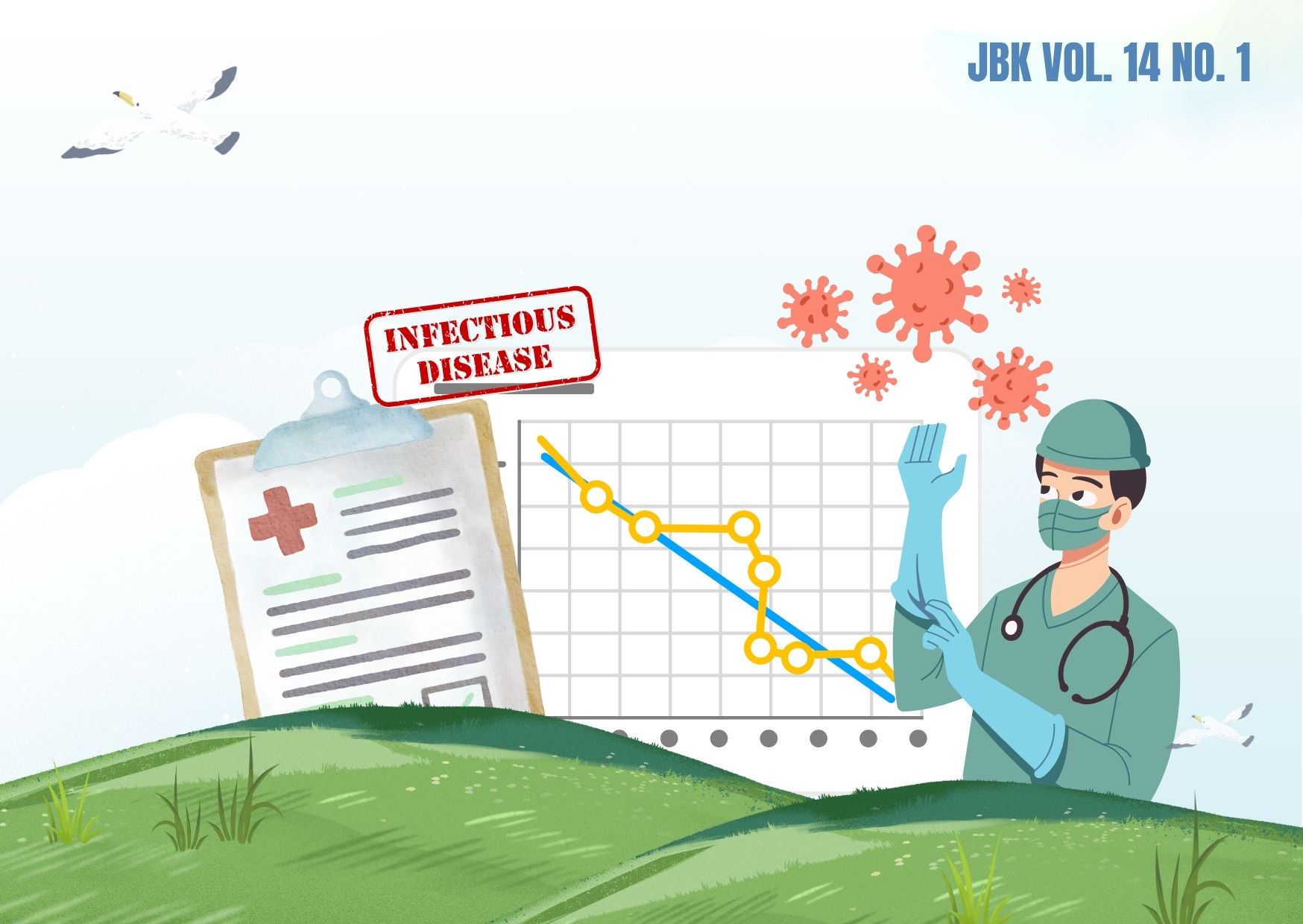CLUSTERING OF DRUG, COSMETIC, TRADITIONAL MEDICINE, AND FOOD CRIME VULNERABILITY IN EAST JAVA USING THE K-MEDOIDS ALGORITHM
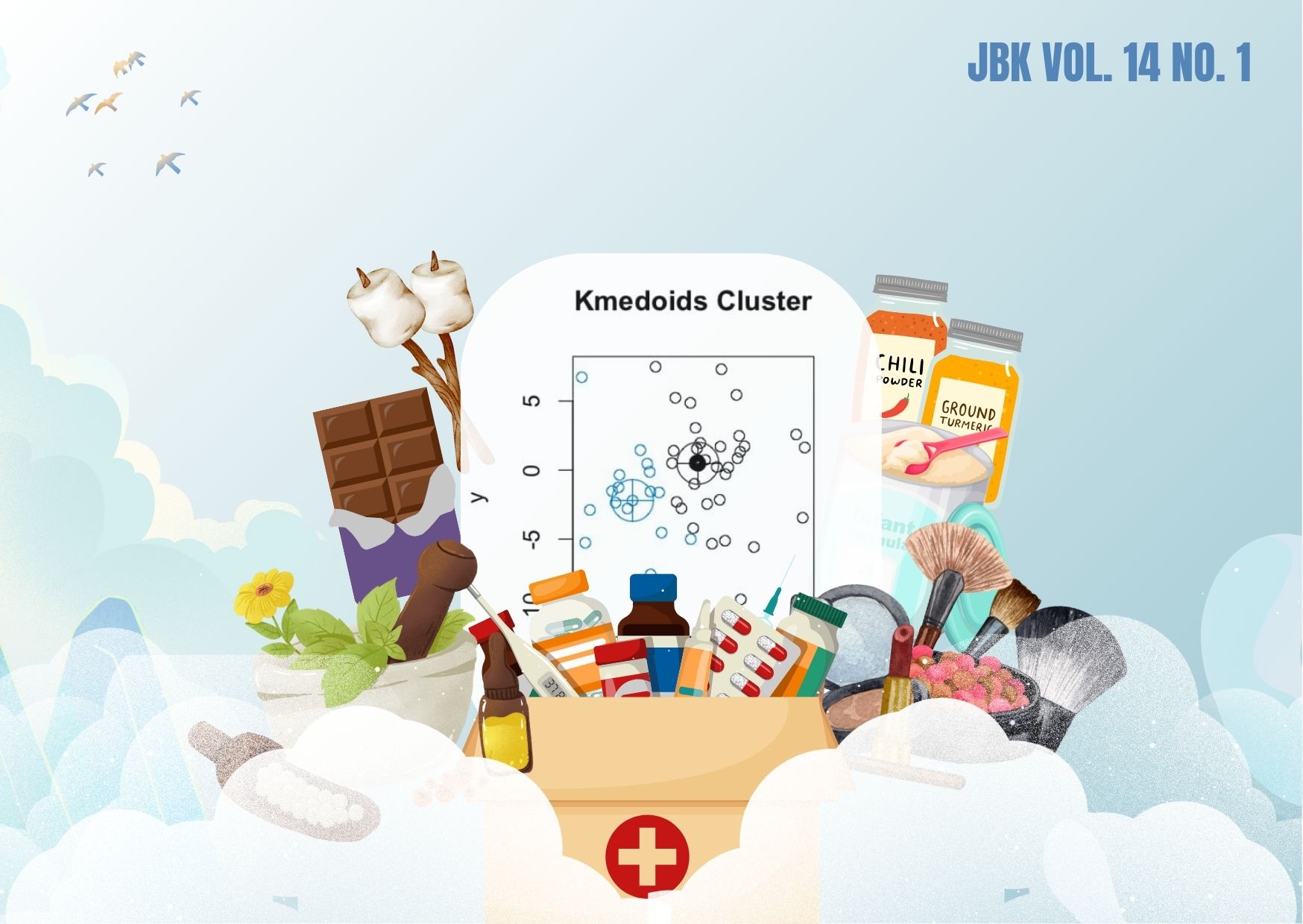
Downloads
Drug and Food crime vulnerability mapping is the process of identifying potential crimes based on investigation, news, and study analysis, including the results of supervision, intelligence, cyber, and information analysis. The purpose of this study is to classify the vulnerability of drug, cosmetic, traditional medicine, and food crime in East Java using the K-Medoids algorithm, as well as to see the development of the vulnerability of drug, cosmetic, traditional medicine, and food crime in East Java Province for 5 years from 2019 to 2023. The method used is the K-Medoids algorithm with the determination of the number of clusters using the Average Silhouette Width (ASW) method. The highest ASW value between 0.28447-0.61210 was obtained in clusters with 5 groups, namely very high, high, medium, low, and very low clusters. The results of the study show that from 2019 to 2023, as many as 12 regencies/cities have an increasingly vulnerable status, while 26 other regencies/cities have an increasingly safe status. The 12 regencies/cities that are increasingly vulnerable are Bangkalan Regency, Gresik Regency, Lamongan Regency, Nganjuk Regency, Pamekasan Regency, Pasuruan Regency, Ponorogo Regency, Sidoarjo Regency, Tuban Regency, Malang City, Probolinggo City, and Surabaya City. It is necessary to empower the community and intensify communication, provide education and disseminate information massively regarding the use of legal and safe Drugs and Food products, especially in areas with very high vulnerability.
Balai Besar POM. Laporan Tahunan 2023 Balai Besar POM di Surabaya [Internet]. 2024. Available from: https://www.pom.go.id/storage/sakip/Laporan%20Tahunan%20Balai%20Besar%20POM%20di%20Surabaya%20Tahun%202023.pdf
Maisusri S, Indra M, Erdiansyah. Penegakan Hukum Terhadap Tindak Pidana Peredaran Obat Impor yang Tidak Memiliki Izin Edar oleh Penyidik Pegawai Negeri Sipil Balai Besar Pengawas Obat dan Makanan di Pekanbaru. J Online Mhs Fak Huk Univ Riau [Internet]. 2016;3(2):1–15. Available from: https://doi.org/10.46807/aspirasi.v8i1.1252
Yuningsih R. Penguatan Kendali Pemerintah Terhadap Peredaran Obat Dan Makanan. Aspir J Masal Sos [Internet]. 2017;8(1). Available from: https://jurnal.dpr.go.id/index.php/aspirasi/article/view/1252
Balai Besar POM. Laporan Tahunan 2022 Balai Besar POM [Internet]. 2022. Available from: https://pppomn.pom.go.id/storage/informasipublik/LAPTAH%20PPPOMN%202024_compressed.pdf
Restiawaty R, Alrip I. Penegakan Hukum Terhadap Peredaran Kosmetik Ilegal: Perspektif Teori Kontrol Sosial Travis Hirschi. J Legistlatif [Internet]. 2024;8(1). Available from: https://journal.unhas.ac.id/index.php/jhl/article/view/41596
Biro Kerjasama Dan Humas BPOM. BPOM Tindak Tegas Penjual Kosmetik Impor Ilegal Senilai 2,2 Miliar Rupiah di Jakarta [Internet]. 2024. Available from: https://www.pom.go.id/berita/bpom-tindak-tegas-penjual-kosmetik-impor-ilegal-senilai-2-2-miliar-rupiah-di-jakarta
Cahyono I, Marsitiningsih M, Widodo S. Peran Badan Pengawas Obat dan Makanan terhadap Peredaran Obat Tradisional yang Mengandung Bahan Kimia Obat Berbahaya dalam Perlindungan Konsumen. Kosmik Huk [Internet]. 2019;19(2):110–7. Available from: https://doi.org/10.30595/kosmikhukum.v19i2.8216
Priyana P. Sosialisasi Bahaya Obat Kimia pada Obat Jamu Tradisional dipandang dari Aspek Hukum Kesehatan. I-com Indones Community J [Internet]. 2023;3(1). Available from: https://doi.org/10.33379/icom.v3i1.2239
Ameliani P, Iskandar H, Wardana DJ. Perlindungan Hukum Bagi Konsumen Terhadap Produk Kosmetik yang Tidak Terdaftar BPOM. Al-Manhaj J Huk dan Pranata Sos Islam [Internet]. 2022;4(2). Available from: https://doi.org/10.37680/almanhaj.v4i2.2062
Khodijah K. Agama Dan Budaya Malu Sebagai Kontrol Sosial Terhadap Perilaku Koruptif. Sos Budaya [Internet]. 2018;15(2):1–15. Available from: http://dx.doi.org/10.24014/sb.v15i2.7606
Muhima RR, Kurniawan M, Wardhana SR, Yudhayana A, Sunardi S, Rahmawati WM, et al. Kupas Tuntas Algoritma Clustering: Konsep Perhitungan Manual dan Program [Internet]. Risanto E, editor. Penerbit Andi; 2021. Available from: https://repository.telkomuniversity.ac.id/pustaka/190007/kupas-tuntas-problem-it.html
Wang X, Xu Y. An improved index for clustering validation based on Silhouette index and Calinski-Harabasz index. IOP Conf Ser Mater Sci Eng [Internet]. 2019; Available from: https://doi.org/10.1088/1757-899X/569/5/052024
Nurhayati N, Sinatrya NS, Wardhani LK, Busman B. Analysis of K-Means and K-Medoids’s Performance Using Big Data Technology. 6th Int Conf Cyber IT Serv Manag [Internet]. 2018; Available from: https://doi.org/10.1109/CITSM.2018.8674251
Zhang L, Gao X, Dong Z, Tan Y, Wu Z. Premarital Sexual Activities Among Students in a University in Beijing, China. Sex Transm Dis. 2002 May;1(29):212–5.
Domingo J, Leon T, Dura E. Scellpam: an R package/C++ library to perform parallel partitioning around medoids on scRNAseq data sets. BMC Bioinformatics. BMC Bioinformatics [Internet]. 2023; Available from: https://doi.org/10.1186/s12859-023-05471-1
Ushakov A V., Vasilyev I. A parallel heuristic for a k-medoids clustering problem with unfixed number of clusters. MIPRO (42nd Int Conv Inf Commun Technol Electron Microelectron [Internet]. 2019; Available from: https://doi.org/10.23919/MIPRO.2019.8756919
Batool F, Hennig C. Clustering with the Average Silhouette Width. Comput Stat Data Anal [Internet]. 2021;158. Available from: https://doi.org/10.1016/j.csda.2021.107190
Lengyel A, Botta‐Dukát Z. Silhouette width using generalized mean—A flexible method for assessing clustering efficiency. Ecol Evol [Internet]. 2019;9(23):13231–43. Available from: https://doi.org/10.1002/ece3.5774
Nanda CA, Nugraha AL, Firdaus HS. Sugiastu Firdaus H. Analisis Tingkat Daerah Rawan Kriminalitas Menggunakan Metode Kernel Density di Wilayah Hukum Polrestabes Kota Semarang. J Geod Undip [Internet]. 2019;8(4). Available from: https://ejournal3.undip.ac.id/index.php/geodesi/article/view/25144
Inayah J, Maghfiroh DASN, Novitasari DCR. Clustering Daerah Rawan Kriminalitas Menggunakan Algoritma Fuzzy C-Means. Jurnal Ilmiah Informatika Komputer. J Ilm Inform Komput [Internet]. 2022;27(2). Available from: http://dx.doi.org/10.35760/ik.2022.v27i2.6019
Irwan I, Sanusi W, Saman F. Pengelompokan Daerah Rawan Kriminalitas di Sulawesi Selatan Menggunakan Metode K-means Clustering. Journal of Mathematics, Computations, and Statistics. J Math Comput Stat [Internet]. 2022;5(1). Available from: https://doi.org/10.35580/jmathcos.v5i1.32719
Suyudi I, Afif MN, Kevin Y, Gabrielle MV. Analisis Pengawasan Post-Market Badan Pengawas Obat dan Makanan pada Peredaran Kosmetik Berbahaya. Deviance J Kriminologi [Internet]. 2022;6(2). Available from: https://doi.org/10.36080/djk.2103
Suryadi UT. Sistem Clustering Tindak Kejahatan Pencurian di Wilayah Jawa Barat Menggunakan Algoritma K-Means. J Teknol Inf Dan Komun Subang [Internet]. 2019;12(1). Available from: https://doi.org/10.47561/a.v12i1.147
Shi HY, Jing FJ, Yan Y, Nguyen B. No The Concept of Consumer Vulnerability: Scale Development and Validation. Int J Consum [Internet]. 2017;41(6). Available from: https://doi.org/10.1111/ijcs.12390
Kumari S, Atem TD, Chaudhary V, Sahu SK, Pal B. Prevalence and risk factors of cosmetic-induced adverse events: A systematic review and meta-analysis. J Appl Pharm Sci [Internet]. 2024;14(11). Available from: https://doi.org/10.7324/JAPS.2024.193512
Copyright (c) 2025 Jurnal Biometrika dan Kependudukan

This work is licensed under a Creative Commons Attribution-NonCommercial-ShareAlike 4.0 International License.
Copyright©2022 Jurnal Biometrika dan Kependudukan (Journal of Biometrics and Population)
This work is licensed under a Creative Commons Attribution-NonCommercial-ShareAlike 4.0 International License.
1. Copyright of all journal manuscripts is held by the Jurnal Biometrika dan Kependudukan.
2. Formal legal provisions to access digital articles of the electronic journals are subject to the provision of the Creative Commons Attribution-ShareAlike license (CC BY-NC-SA), which means that Jurnal Kesehatan Biometrika dan Kependudukan to keep, transfer media/format, manage in the form of databases, maintain, and publish articles.
3. Published manuscripts both printed and electronic are open access for educational, research, and library purposes. Additionally, the editorial board is not responsible for any violations of copyright law.






























